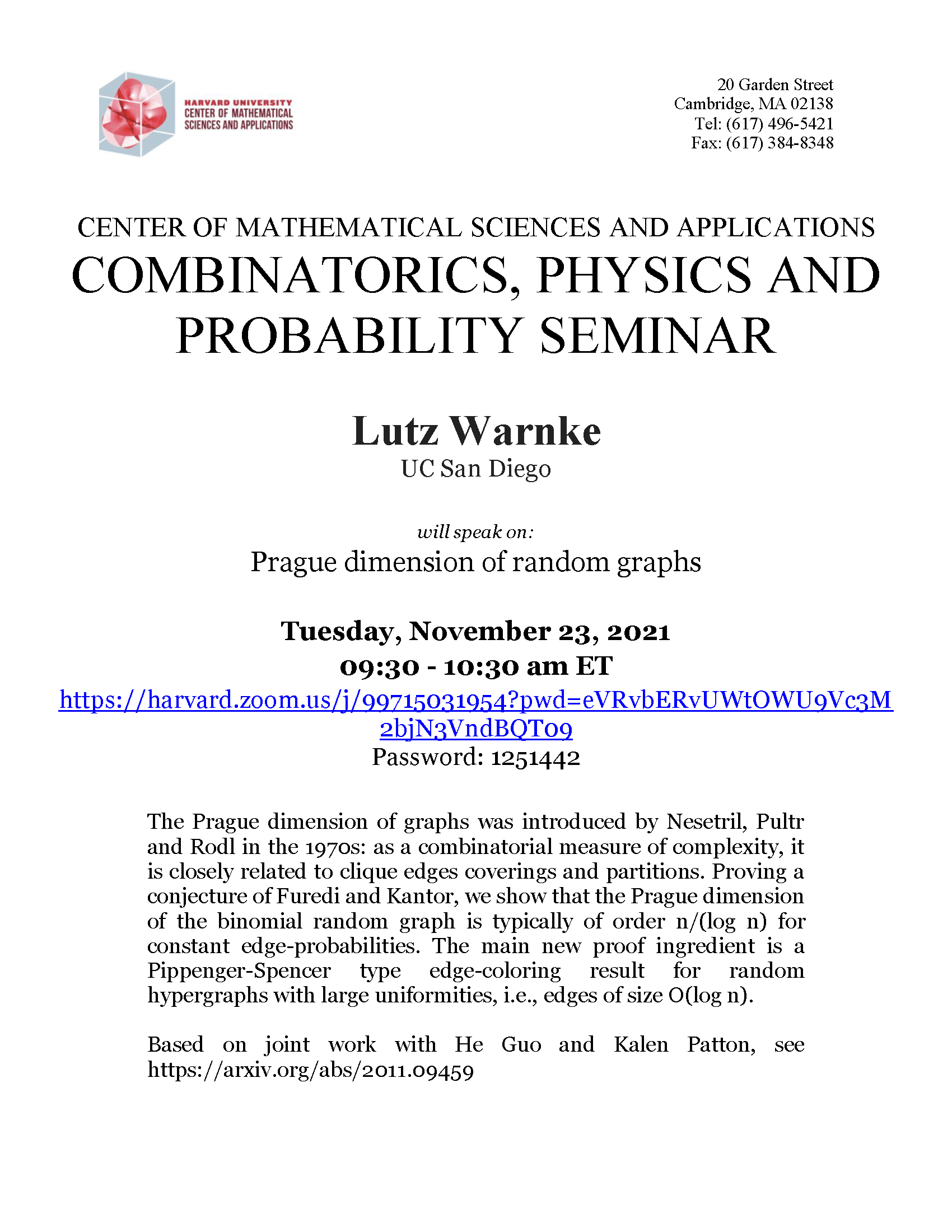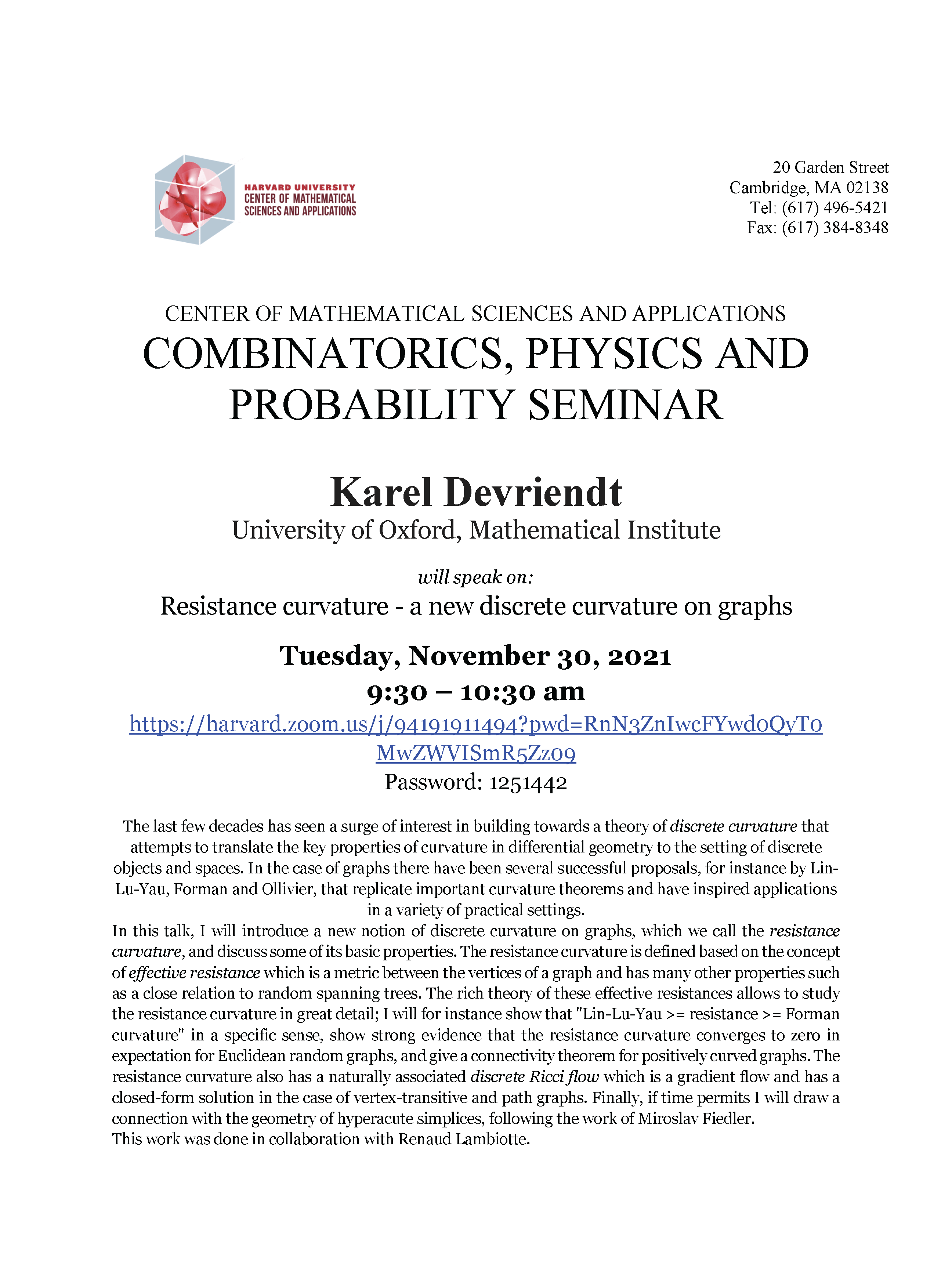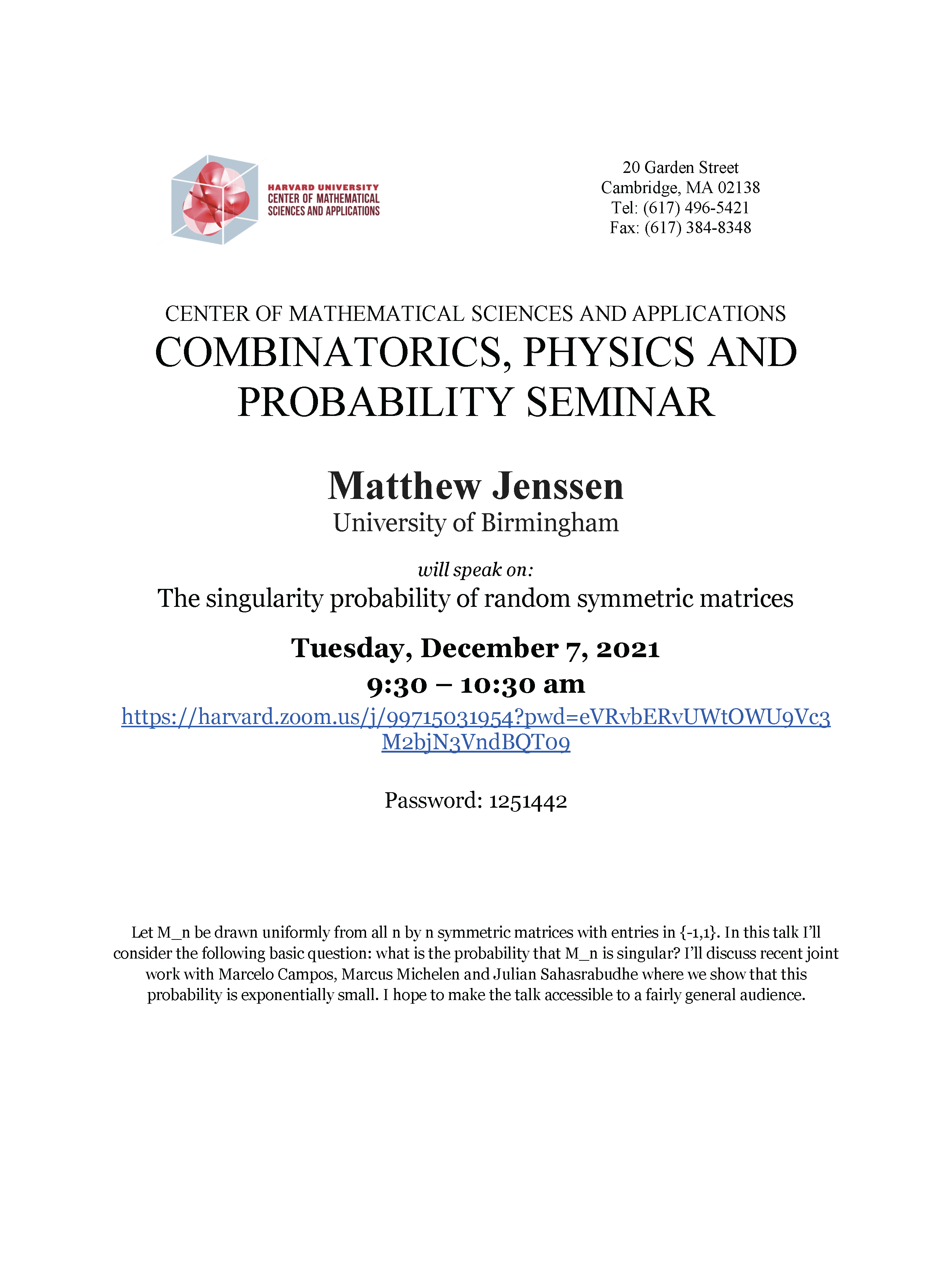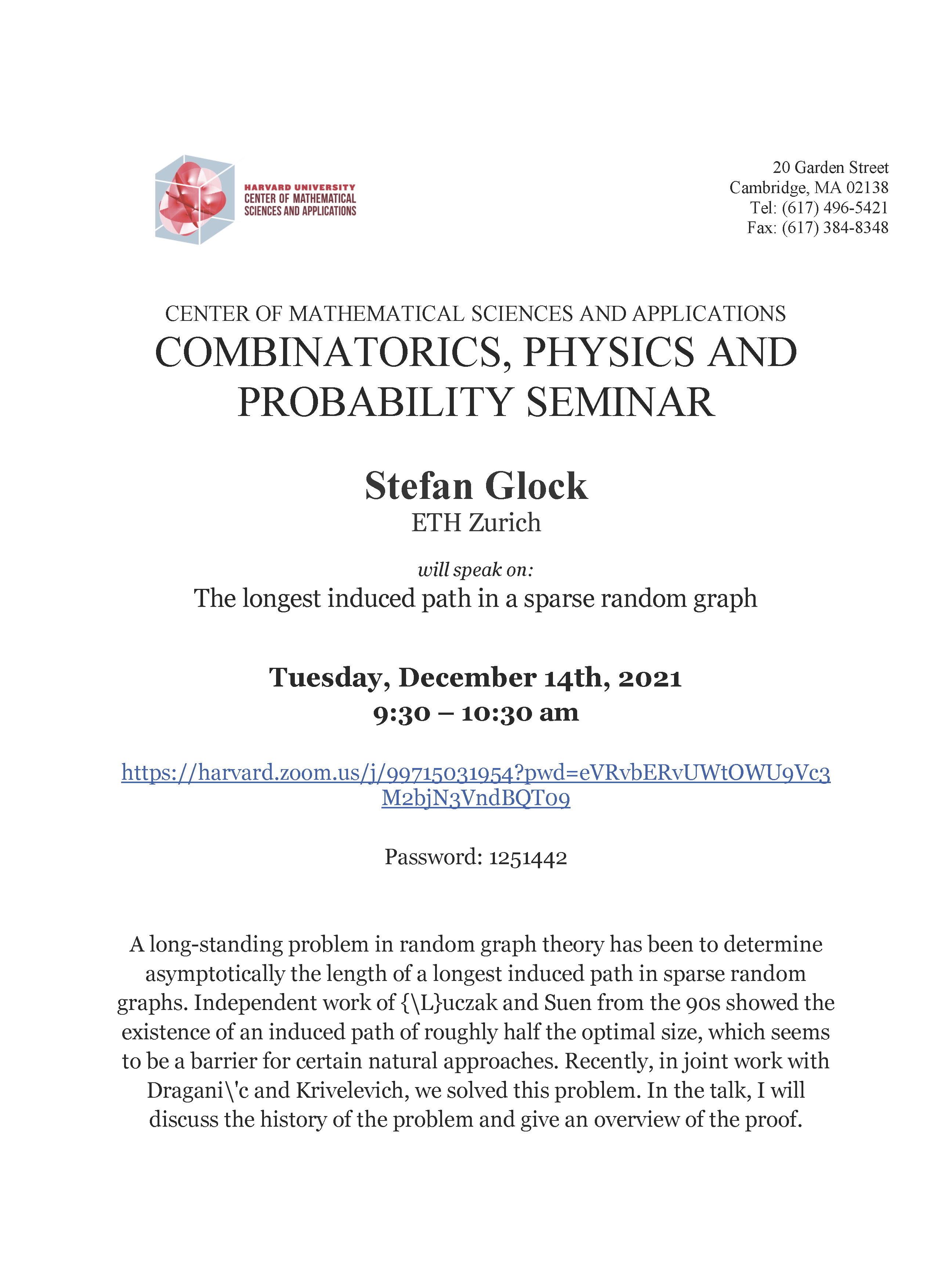Gradient flows on totally nonnegative flag varieties
Abstract: One can view a partial flag variety in C^n as an adjoint orbit inside the Lie algebra of n x n skew-Hermitian matrices. We use the orbit context to study the totally nonnegative part of a partial flag variety from an algebraic, geometric, and dynamical perspective. We classify gradient flows on adjoint orbits in […]





